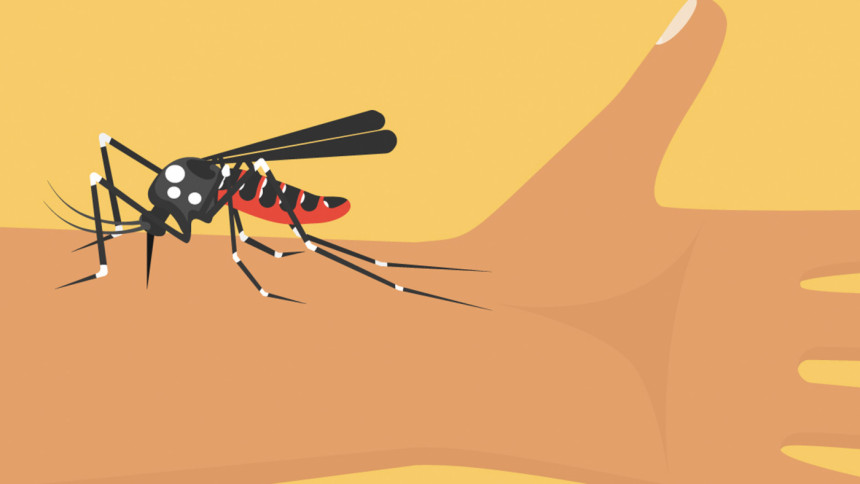Managing Dengue outbreak with COVID-19

When we all are struggling to fight the COVID-19 pandemic, Dengue is an overburden for us. Since we must deal with the diseases, we need to know the prevention and management better.
Factors increasing the risk of DHF outbreaks: The occurrence of the Dengue Haemorrhagic Fever (DHF) outbreaks is linked to a number of factors, including the density of mosquito vectors, particularly that of Aedes aegypti. In many instances, a small number of actively biting female mosquitos can infect an entire household. Virus transmission is, of course, increased by denser human populations.
Dengue virus may also spread in settings involving large numbers of people, such as in hospitals where visitors, patients and staff may be bitten by infected Ae. aegypti.
A distinct seasonal pattern in DHF outbreaks is evident in most places. DHF hospitalisation rates increase during the rainy season and decline several months after the cessation of the rains. During these seasonal lulls, virus transmission is most likely to occur in endemic urban areas where high densities of the human population ensure a constant supply of susceptible individuals, and numerous vector breeding and resting sites around human dwellings insulate vector populations from the effects of seasonal rainfall.
Control of dengue haemorrhagic fever: To control outbreaks of DHF, two operations must be conducted simultaneously: emergency mosquito control and treatment of patients in the hospital.
The following steps should be immediately taken when an outbreak of dengue or DHF is suspected:
• A public information campaign should be instituted, stressing the basic epidemiological characteristics of dengue and DHF and the measures the individual can take to reduce the risk of infection, e.g. personal protective measures, the use of household aerosol insecticides, source reduction efforts at home and in the neighbourhood.
• The geographical area should be defined in order to determine the extent of the insecticide spraying operation required.
• An inventory of the location, quantity and availability of pesticides and the equipment for their application should be made.
The objective of emergency mosquito control measures is to eliminate infected mosquitos and to break the transmission cycle by reducing mosquito populations to extremely low levels during the time necessary for viraemic subjects to recover.
Control of an epidemic may not be feasible if adult populations of Ae. aegypti cannot be sufficiently reduced. However, a sustained reduction of vector populations will inevitably result in fewer cases.
Prevention of dengue haemorrhagic fever outbreaks: Prevention of DHF outbreaks is based on vector control, as a vaccine is not yet available. Currently, the only effective way to avoid dengue virus infection is to avoid being bitten by infected mosquitos.
A broad approach to the prevention of DHF involves the integration of the measures described in previous chapters. Such a programme would combine two or more of the following components:
• Disease surveillance and treatment, whether centralised or based on local health care systems.
• Vector surveillance and control, with a mixture of environmental management and chemical and biological control.
• Provision of reliable potable water, sanitation and solid waste management.
• Health education, public health communication and community participation.
Dengue virus transmission is often a problem of domestic environmental management, and members of a household can frequently reduce their risk of DF and DHF at little or no cost by controlling larval habitats and combating adult mosquitos by screening windows and doors and using household insecticide space sprays.
A challenge for public health authorities is to find ways of getting a community to recognise the problem, assume a share of the responsibility for its solution and acquire the capability and motivation to prevent and control dengue fever.
Source: World Health Organisation


 For all latest news, follow The Daily Star's Google News channel.
For all latest news, follow The Daily Star's Google News channel. 



Comments